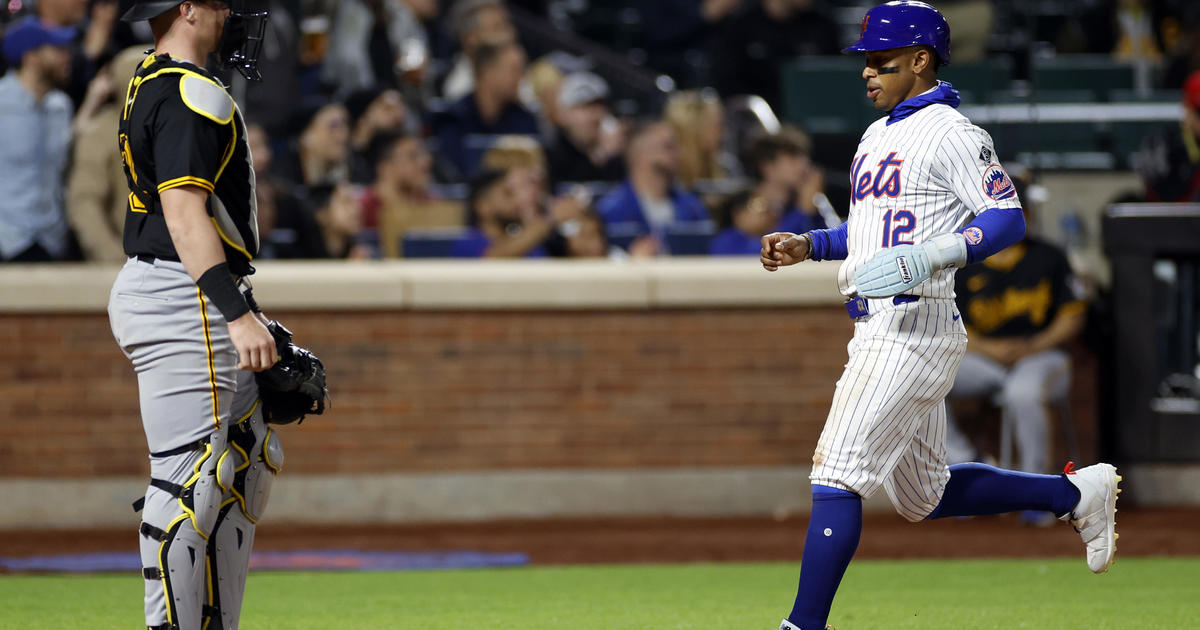Local Artist Spotlight: Jim Rugg
By Daniel McCloskey
Jim Rugg is a Pittsburgh artist best known for his work in comics. He co-created and drew Street Angel, Afrodisaic with Brian Maruca, and worked for for D.C. Comics on their The Plain Janes series.
I happened to run into Jim at Copacetic Comics in Polish Hill a few days after I read Street Angel. We had a brief chat about the piece, and since then we've kept in touch. This is the first time I've had the opportunity to interview him about his role as an artist.
CBSPittsburgh's Daniel McCloskey: Your breakthrough comic Street Angel was about a thirteen-year-old homeless orphan girl who split her time between beating up ninjas and skateboarding around the ghetto. You've mentioned that the character Jesse Sanchez (aka Street Angel) was in part a response to contemporary comics portrayal of woman. Could you talk about that and what inspired the story?
Jim Rugg: The comics industry was a real boys club for a long time (on both the creative side and in terms of readership/fandom). When we started Street Angel, I had been doing small press/indie shows (like SPX and MoCCA). Manga had invaded bookstores, and if you looked around, you could see the boys club was a construct. Women liked reading comics, there just wasn't much for them in the traditional Marvel/DC superhero/male power fantasy genre. At the time, a popular subgenre of comics was the "bad girl" comics, basically T&A books for people who couldn't work the Internet for their porn needs. I used to see these books on the rack and get angry that the market supported this trend.
So Street Angel began as the opposite of everything I hated about comics at the time (there were other contemporary trends I didn't care for like decompressed storytelling or "writing for the trade" and Peter Parker's and Bruce Wayne's demeanor). Within a few weeks of developing Street Angel, that motivation changed. I don't think I could sustain my creative process over a long time period with hate and anger as my inspiration. That stuff was replaced with things we liked in comics like humor and ninjas, and Street Angel was the result.
DM: A lot of your work seems to reflect on comics as a medium. Afrodisiac was designed to look like an incomplete collection of an old comics run. Some of your shorter works, like your contribution to the last Mome anthology, are like bits of a story that will never be rediscovered. Do you see yourself as an artist who makes comics about comics?
JR: I have said that before. It's an example of my inability to talk articulately about comics and my work. I think any creative work comments on its form. In my opinion it should provide the reader with the information necessary for him/her to process, understand, and hopefully enjoy the work. I definitely enjoy the formal qualities of comics and I tend to enjoy comics and cartoonists that share that interest (like Chris Ware, Dan Clowes, Kevin Huizenga, Yokoyama, Crumb, Panter, the Fort Thunder guys, Kirby).
At the end of the day, comics are my life – professionally and recreationally. I'm sure I've spent 100x more time looking at and thinking about comics than anything else in my life. Inevitably, I make comics about comics.
DM: You were chosen as one of the first batch of artists to be involved in the Flight School Fellowship program--designed to help Pittsburgh artists with their career development. How was that experience for you? Do you think that it's effected how you think of yourself as an artist?
JR: The experience was good. I encourage anyone interested in a career as an artist to look into it. Flight School is a program developed with an organization called Creative Capital. Creative Capital has offered their program/workshops in cities around the country for over a decade. The program began with a 3 day Creative Capital retreat. It was very intense and amazing. The rest of Flight School then expanded on the ideas of Creative Capital and tied those ideas into the resources available in the Pittsburgh arts community.
Personally, I think the most beneficial aspect of the program for me was interacting with a group of artists from different disciplines. I was encouraged by how open and accepting the group was of my comics work. As a result of the experience, I do think of myself or at least my work, differently. Since the Fellowship, I have applied for (and even received) grants related to my comics work, an artist residency, group art shows… when I was in school (middle school through college), the idea of comic books was almost always dismissed by other students, art teachers, and artists that I encountered. I think that has changed a lot in the past decade.
My experience in the Flight School Fellowship makes me believe that cartoonists can pursue opportunities previously reserved for Artists. As society evolves, people are developing more and more unique paths to make a living (recently I visited the studio of a man who makes animatronic eyeballs for companies all over the world). As a cartoonist, I search for opportunities to grow my readership, to pay my mortgage, and to allow me to try new directions in my work. Access to arts organizations and exhibition spaces are additional avenues to help me realize those goals.
DM: You have two gallery shows ahead of you. Would you like to talk about what you've been working on for that?
JR: The first show is [early this year] in Pittsburgh (at the Toonseum). It is a chance to show some of the comics work that I've been doing since Afrodisiac. People always ask what I'm doing next. This show will answer that question. The truth is that I'm not sure what my next long-form comics project will be. But I am making comics. I have been experimenting and doing a lot of short comics, one-page strips, single panel drawings, and prints. This show will gather a lot of the work I've done for anthologies like Smoke Signal, Secret Prison, Diamond Comics, Pood, MOME, Rub the Blood, Monster, Magic Bullet, and give fans of Afrodisiac and Street Angel a chance to see some new work.
The second show is in mid 2012 in LA (at iam8bit gallery). It is a collection of drawings I've been making with ballpoint pens on notebook paper. I started doing these drawings [in early 2011]. The response has been surprisingly positive. I did a piece for a group show, Super iam8bit, and the gallery (who I've worked with in the past) asked me if I'd be interested in a solo exhibition of these drawings. So I've been working on those as much as time permits. It's been a great experience for me so far. I keep an ongoing list of ideas (because inevitably, I will forget any idea if I don't write it down). Then as I have time to draw, I basically choose whatever I'm most excited to draw at that moment and go for it. The first couple days I got to do this, I had a sense of déjà vu. This is exactly how it felt to draw stuff my whole life until I was like 18 and started doing assignments for school and then commercial work or even to some extant drawing comics because those drawings served a script. Anyway, it's been a very rewarding experience working this way. It feels like it affects the way I think.
DM: Would you tell us about your experience working over at the Brew House?
JR: The Brew House Association is an arts organization in the South Side. They have a program called the Distillery that brings together young(ish) artists and provides studio space for the artists to work. We interact with a number of artists, curators, speakers, and mentors. We have two group shows during the year. This year Distillery worked with AIR (another local arts resource - a printing facility). One of the artists from a previous Distillery group described the program as grad school without the tuition. It's still early in the year, but so far, it's been fantastic. Like Flight School, the highlight is probably interacting with the other Distillery participants. We also have regular critiques that are a nice alternative to my usual solitary working process.
DM: You've talked about living in a "golden age of everything." What does that mean to you? What does it mean for your work?
JR: Cynically, it means that there are more distractions than ever before – it's a combination of a lot of new work being created in every field (at least the ones I am interested in) along with greater and more accessible archives of cultural work. It's like the Internet has recreated the Library of Alexandria. Now someone living in the middle of nowhere (like me when I was a kid) has access to the greatest art, culture, science, etc. that he/she can imagine. I think the results of this technology are just starting to bear fruit. As a cartoonist and armchair comics historian, I am constantly amazed at the level of talent of young cartoonists that I am meeting more and more frequently at shows and online. It is quite literally beyond anything I ever imagined as a young comics reader. Beyond comics, I think this "golden age" is apparent in the world of comedy, music, film, science, and history though I am less confident in talking about those areas.
What does it mean for my work? That's a good question. I don't know. It's very easy to waste time. I thought about saying that I'm neurotic because of all the good work I see, but I think I am neurotic period. What this means to me and my work is something I think about a lot. It seems like we could be facing a saturation point in terms of sheer volume of content being created and available, but I'm not sure that's how it works. The specificity of content facing consumers today is very different than what we've had in the past. I think one of the immediate impacts on my own work is the sheer freedom. In the 90s, when Frank Miller did Sin City, a lot of people said it won't work. Black and white comics don't sell. Crime comics don't sell. Its success paved the way for non-superhero genre work in American comics. Before that, there were indie/art comics and mainstream/corporate superhero comics. Since then, the content of American comics has diversified to the point that a cartoonist can tackle almost any subject matter and if done well, can find an audience. If you weren't reading comics in 1990, I cannot express how different things are now. I remember when manga exploded a decade ago. People would talk about how in Japan there are comics about basketball and golf and politics and doctors and a million other things. And we would look at each other with puzzled expressions. But now, we can point to a very diverse collection of comics styles, subject matter, and vocabulary. It's one more barrier or limitation that no longer exists in comics. It's a little overwhelming but so is the ocean or outer space. Overwhelming is awesome. What's the opposite? A jail cell. It just requires a little mental reorientation.
I used to read interviews with cartoonists and they would say stuff like the only limit of what comics can depict are the limits of the cartoonist's imagination. They were referring to how cheap comics were to produce compared to special effects in big budget movies. But the truth is, we are realizing the potential referred to in those sentiments. I'm constantly surprised (and depending on my mood either inspired or intimidated) by the imaginations of cartoonists. I remember reading Al Columbia's Pim & Francie, and thinking it was great. But then I thought, I can't wait to see what the 12 year old kid who reads and rereads and loves this book comes up with in a few years.
I grew up in the culture of scarcity but now live in the culture of abundance. When I have down time and want to be entertained, the question becomes – if can look at or watch or read anything (virtually), how and what do I choose? It's a long way from my childhood when I had 3 television stations and half a shelf of dinosaur books at the local library.
Head to CBS Pittsburgh's Best Of page for more local tips on family fun, shopping, nightlife, food, culture and more!
More information about Jim and his work can be found at jimrugg.com







